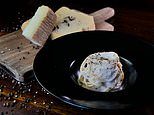The Secret to Authentic Cacio e Pepe
Cacio e Pepe, a dish that translates to “cheese and pepper” in Italian, is a staple of Roman cuisine that has gained worldwide popularity. However, many home cooks unknowingly compromise its rich flavor and creamy texture by incorporating a common ingredient. Scientists have now shed light on the ultimate recipe, revealing that traditional pasta water has no place in this beloved dish.
The Science Behind the Sauce
The key to a perfect Cacio e Pepe lies in creating a smooth, emulsified sauce. This is achieved by carefully combining Pecorino Romano cheese and black pepper with rendered pasta starch. Contrary to popular belief, using pasta water can disrupt this delicate balance, resulting in an unappetizing, glue-like consistency.
To create the ideal sauce, start by cooking your pasta in abundant salted water until it’s al dente. The type of pasta used is crucial; traditional Italian recipes call for Tonnarelli or spaghetti. Once cooked, drain the pasta, reserving none of the water.

In a separate pan, gently melt the Pecorino Romano cheese over low heat, stirring constantly. The cheese should be freshly grated to ensure optimal flavor and texture. As the cheese begins to melt, gradually add small amounts of the rendered pasta starch, stirring vigorously to create a smooth emulsion.
Achieving the Perfect Emulsion
The addition of black pepper is crucial, not only for flavor but also for its role in enhancing the emulsion’s stability. Freshly ground black pepper should be added in moderation to avoid overpowering the dish.
To finalize the dish, combine the cooked pasta with the cheese sauce, tossing it gently to coat the pasta evenly. The result is a rich, creamy Cacio e Pepe that showcases the simplicity and elegance of Italian cuisine.
By following this scientifically-backed method and omitting pasta water from the recipe, you’ll be able to create an authentic Cacio e Pepe that rivals those served in Italy’s finest restaurants.


